Table of Contents
Introduction
Bavaria, nestled in the heart of Germany, is a region steeped in rich history and cultural heritage. From medieval towns with well-preserved architecture to magnificent castles that echo tales of royalty, Bavaria offers a treasure trove of historical sites waiting to be explored. One of the best ways to immerse oneself in the region’s captivating history is through historical tours that unravel the stories and significance behind each landmark. These tours not only provide a glimpse into the past but also offer valuable insights into Bavaria’s evolution over the centuries. In this exploration of historical tours in Bavaria, we will delve into the fascinating narratives woven into iconic sites such as Neuschwanstein Castle, Nuremberg’s Old Town, Dachau Concentration Camp Memorial Site, and more. Join us on a journey through time as we uncover the historical gems that make Bavaria a captivating destination for history enthusiasts and curious travelers alike.
A. Brief overview of Bavaria’s historical significance:
Bavaria holds a central place in Germany’s historical narrative, shaped by centuries of cultural, political, and economic influence. Its roots trace back to the early medieval period when Bavarians established their duchy, evolving into a powerful state within the Holy Roman Empire. Over time, Bavaria flourished under various ruling dynasties, contributing significantly to European politics and culture.
The region’s history is marked by the rise of powerful dynasties such as the House of Wittelsbach, whose legacy is evident in the splendid castles and palaces that dot Bavaria’s landscape. Bavaria’s strategic location at the crossroads of trade routes also played a pivotal role in its development, fostering a vibrant exchange of ideas, arts, and commerce.
B. Importance of historical tours in understanding Bavarian history:
Historical tours serve as windows to the past, offering immersive experiences that bring Bavaria’s history to life. These tours not only showcase the architectural marvels and cultural heritage of the region but also delve into the stories of the people who shaped Bavaria’s identity.
By exploring historical sites like Neuschwanstein Castle, Nuremberg’s Old Town, and the Dachau Concentration Camp Memorial Site, visitors gain a deeper understanding of Bavaria’s historical significance. They uncover tales of kings and emperors, witness the impact of wars and revolutions, and confront the complexities of Germany’s tumultuous past.
Moreover, historical tour provide context and perspective, allowing travelers to appreciate Bavaria’s evolution from a medieval stronghold to a modern-day cultural hub. They highlight the interconnectedness of history, art, politics, and society, offering insights that go beyond textbooks and lectures.
In essence, historical tours not only educate but also inspire, fostering a sense of connection to Bavaria’s rich heritage and igniting curiosity about the forces that have shaped this remarkable region.
Neuschwanstein Castle Tour
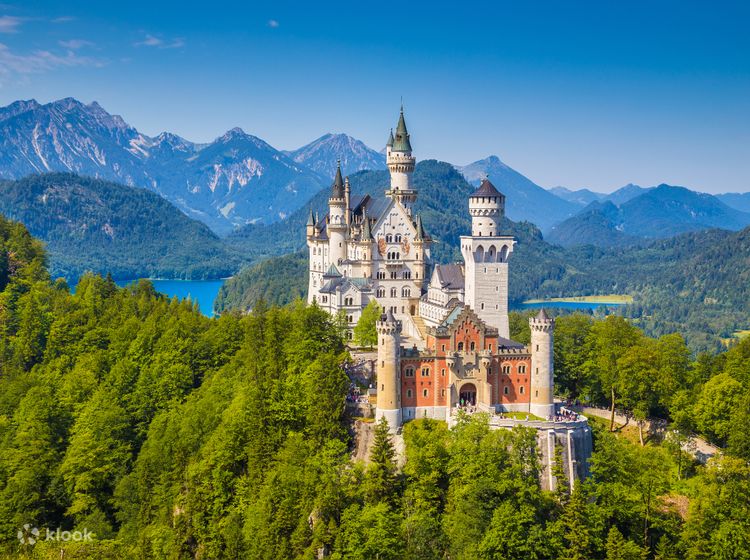
The Neuschwanstein Castle Tour offers a magical journey through one of the most iconic and enchanting castles in the world. Built by King Ludwig II in the 19th century, this fairy-tale castle, perched on a rugged hill near Füssen, captivates visitors with its stunning architecture and picturesque surroundings. The guided tour takes you through opulent rooms adorned with intricate murals and lavish decorations, all inspired by Wagnerian operas and medieval legends. As you explore the castle’s halls and towers, you’ll learn about the mysterious life of King Ludwig II and the fascinating history behind this extraordinary masterpiece, making it a must-visit destination for history enthusiasts and dreamers alike.
A. Background of Neuschwanstein Castle
Neuschwanstein Castle, commissioned by King Ludwig II of Bavaria, stands as a testament to the king’s romantic vision and fascination with medieval legends. Constructed in the late 19th century, between 1869 and 1886, the castle was intended as a personal retreat for Ludwig and a homage to the composer Richard Wagner. Although never fully completed, Neuschwanstein’s dramatic location atop a rugged hill and its fairy-tale architecture have made it one of the most recognizable and visited castles in the world. Its design reflects a blend of Romanesque, Gothic, and Byzantine styles, embodying Ludwig’s dream of a fantastical medieval castle.
B. Tour Highlights and Key Features
The Neuschwanstein Castle tour offers visitors a glimpse into the lavish and imaginative world of King Ludwig II. Key highlights include:
- The Throne Hall: Inspired by Byzantine architecture, this grand hall is adorned with murals depicting scenes from Wagner’s operas and medieval legends. Although the throne itself was never completed, the hall’s opulence is undeniable.
- The Singer’s Hall: One of the largest rooms in the castle, it was designed to host musical performances and features murals of heroic Germanic legends, reflecting Ludwig’s passion for music and mythology.
- King’s Bedroom: This room showcases intricate woodcarvings and elaborate decor, with a focus on themes of knighthood and chivalry. The bedroom’s neo-Gothic design is both regal and intimate.
- The Kitchens: Surprisingly modern for their time, the castle’s kitchens offer a fascinating look at the advanced culinary technology of the late 19th century, including a rotisserie and automatic spit.
- The Views: Perhaps one of the most breathtaking aspects of the tour is the panoramic views of the Bavarian Alps and surrounding countryside, which can be enjoyed from various vantage points within the castle.
C. Historical Context and Significance
Neuschwanstein Castle was built during a period of political and social upheaval in Bavaria and across Europe. King Ludwig II, often referred to as the “Mad King” due to his eccentricities and reclusive nature, sought solace in creating an idyllic, medieval-inspired retreat. His vision for Neuschwanstein was heavily influenced by his love for Richard Wagner’s operas and the romanticized ideals of knighthood and monarchy.
Despite its fairy-tale appearance, Neuschwanstein Castle symbolizes Ludwig’s desire to escape from the realities of his time, including the pressures of his royal duties and the encroaching modernization of society. The castle was intended to be a personal refuge rather than a seat of power or a public monument.
Today, Neuschwanstein Castle stands as a cultural and architectural landmark, attracting millions of visitors annually. Its historical significance lies not only in its stunning beauty and romantic allure but also in its representation of a king’s dream and the era’s broader cultural and historical context. Through its preservation and tours, Neuschwanstein continues to inspire and captivate, offering a window into the imaginative spirit of King Ludwig II and the romanticism of 19th-century Bavaria.
Nuremberg Old Town Tour
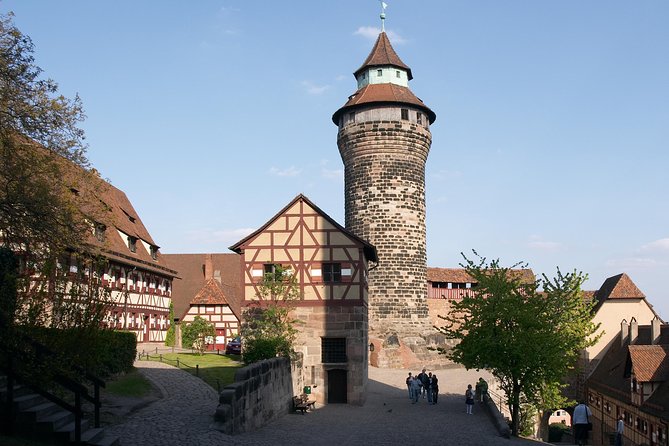
The Nuremberg Old Town Tour immerses visitors in the rich tapestry of medieval and modern history within one of Germany’s most historic cities. Walking through the well-preserved streets, you’ll encounter significant landmarks such as the imposing Imperial Castle, the Albrecht Dürer House, and the bustling Market Square, home to the iconic Schöner Brunnen fountain. The tour delves into Nuremberg’s storied past, from its role as a center of the Holy Roman Empire to its significance during the Nazi era and the Nuremberg Trials. This journey through time highlights Nuremberg’s architectural beauty and historical importance, offering a comprehensive view of its enduring legacy.
A. Overview of Nuremberg’s Historical Importance
Nuremberg, located in the heart of Bavaria, is a city with a profound historical significance that spans several centuries. As a prominent center of the Holy Roman Empire, Nuremberg played a crucial role in medieval politics, commerce, and culture. The city was a hub for the arts and sciences, fostering talents like the renowned painter Albrecht Dürer. In the modern era, Nuremberg gained notoriety during the Nazi period, hosting massive rallies and serving as the site for the infamous Nuremberg Trials, where key Nazi leaders were prosecuted for war crimes. This rich and varied history makes Nuremberg a vital destination for understanding both medieval and contemporary European history.
B. Tour Itinerary Covering Key Sites
- Imperial Castle (Kaiserburg): The tour begins at the Nuremberg Castle, a symbol of the city’s medieval power. Visitors can explore the castle’s fortifications, royal chambers, and the Deep Well, learning about its role as a residence for Holy Roman Emperors.
- Albrecht Dürer House: Next, the tour moves to the former home of Albrecht Dürer, now a museum dedicated to the life and works of the famous Renaissance artist. The house offers insights into Dürer’s artistic process and personal life.
- Market Square (Hauptmarkt): The bustling heart of Nuremberg, the Market Square is home to the Schöner Brunnen (Beautiful Fountain) and the Frauenkirche (Church of Our Lady). The square has been a focal point for commerce and public life since the Middle Ages.
- St. Sebaldus Church: This medieval church, one of the oldest in Nuremberg, is renowned for its stunning architecture and historical artifacts. The tour highlights its intricate Gothic details and its importance to the city’s religious history.
- Nazi Rally Grounds: The tour also includes a visit to the former Nazi rally grounds, offering a sobering look at the city’s role during the Third Reich. The Documentation Center provides comprehensive exhibits on the Nazi era and the Nuremberg Trials.
- Nuremberg Trials Courthouse: The tour concludes at the Palace of Justice, where the Nuremberg Trials were held. Visitors can see Courtroom 600 and learn about the landmark trials that sought justice after World War II.
C. Insights into Nuremberg’s Medieval and Modern History
Nuremberg’s medieval history is marked by its significance as a free imperial city and a thriving center of trade and culture. The city’s strategic location made it a vital trade hub, while its rich cultural scene attracted artists, scientists, and thinkers. The Imperial Castle and other medieval landmarks reflect Nuremberg’s prominence during this era.
In the 20th century, Nuremberg’s history took a darker turn as it became a focal point of Nazi propaganda and power. The Nazi rally grounds and the Nuremberg Trials are key sites that offer deep insights into this tumultuous period. The trials, in particular, were a groundbreaking moment in international law, setting precedents for prosecuting war crimes and crimes against humanity.
Through its blend of medieval charm and modern historical significance, Nuremberg offers a comprehensive narrative of resilience and transformation. The city’s ability to preserve its historical sites while acknowledging its complex past makes it a compelling destination for understanding the broader currents of European history.
Dachau Concentration Camp Memorial Site Tour
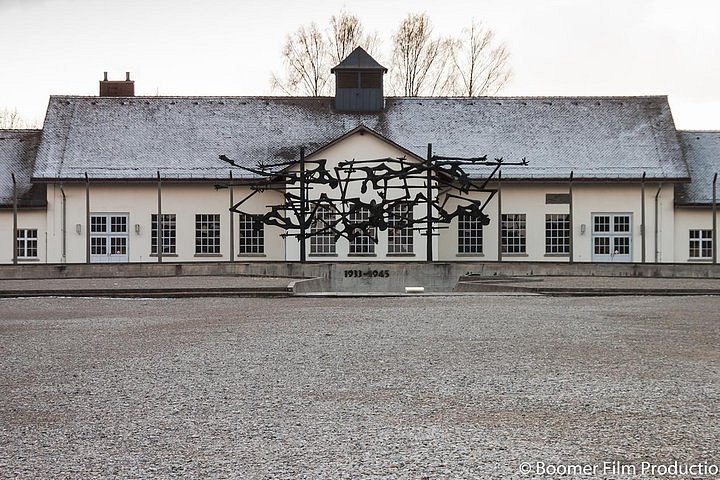
The Dachau Concentration Camp Memorial Site Tour provides a poignant and educational experience, guiding visitors through one of the first Nazi concentration camps, established in 1933. Located near Munich, the site serves as a powerful reminder of the atrocities committed during the Holocaust. The tour includes the camp’s barracks, the crematorium, and the memorial chapels, offering a somber look at the conditions endured by the prisoners. Through informative exhibits and guided narratives, visitors gain a deeper understanding of the human suffering that occurred here and the historical significance of Dachau as a symbol of the Nazi regime’s brutality and the resilience of its survivors.
A. Introduction to Dachau Concentration Camp
Dachau Concentration Camp, established in March 1933, was the first Nazi concentration camp and served as a prototype and training ground for all subsequent camps. Located near Munich, it initially held political prisoners but later expanded to incarcerate Jews, Roma, homosexuals, and other groups targeted by the Nazi regime. Over 200,000 prisoners passed through Dachau during its operation, and tens of thousands died due to brutal conditions, forced labor, medical experiments, and executions. Today, Dachau stands as a memorial and educational site, preserving the memory of those who suffered and died there and serving as a grim reminder of the atrocities of the Holocaust.
B. Tour Details and Experiences Offered
The Dachau Concentration Camp Memorial Site offers guided tours and self-guided audio tours that provide a comprehensive overview of the camp’s history. Key elements of the tour include:
- Visitor Center and Museum: The tour begins with an introduction at the visitor center, which houses exhibits detailing the rise of the Nazi regime, the establishment of Dachau, and the daily life and suffering of the prisoners.
- Camp Grounds: Visitors walk through the original camp grounds, including the roll-call square, where prisoners were subjected to harsh discipline and punishment.
- Barracks: The reconstructed barracks provide a stark view of the overcrowded and inhumane living conditions that prisoners endured.
- Crematorium and Gas Chamber: The tour includes the crematorium area, where many prisoners were killed and their bodies disposed of. The gas chamber, although never used for mass executions at Dachau, is a chilling reminder of the camp’s lethal capabilities.
- Memorial Chapels: Several memorials and chapels have been erected by various religious groups to honor the victims, providing spaces for reflection and remembrance.
- International Monument: The monument, created in 1968, symbolizes the suffering and resilience of the prisoners and serves as a powerful reminder of the camp’s legacy.
C. Importance of Visiting for Understanding WWII History
Visiting the Dachau Concentration Camp Memorial Site is crucial for understanding the full scope of World War II and the Holocaust. It offers an immersive educational experience that goes beyond textbooks, allowing visitors to see firsthand the remnants of a system designed for persecution and genocide. The site serves as a powerful testament to the human capacity for both evil and resilience, highlighting the importance of remembering and learning from the past to prevent future atrocities. Engaging with this history fosters a deeper comprehension of the horrors of the Nazi regime, the suffering of millions, and the enduring need for vigilance against hatred and intolerance. Through its preservation and educational efforts, Dachau not only honors the victims but also underscores the critical lessons of human rights and dignity.
Munich Third Reich Tour
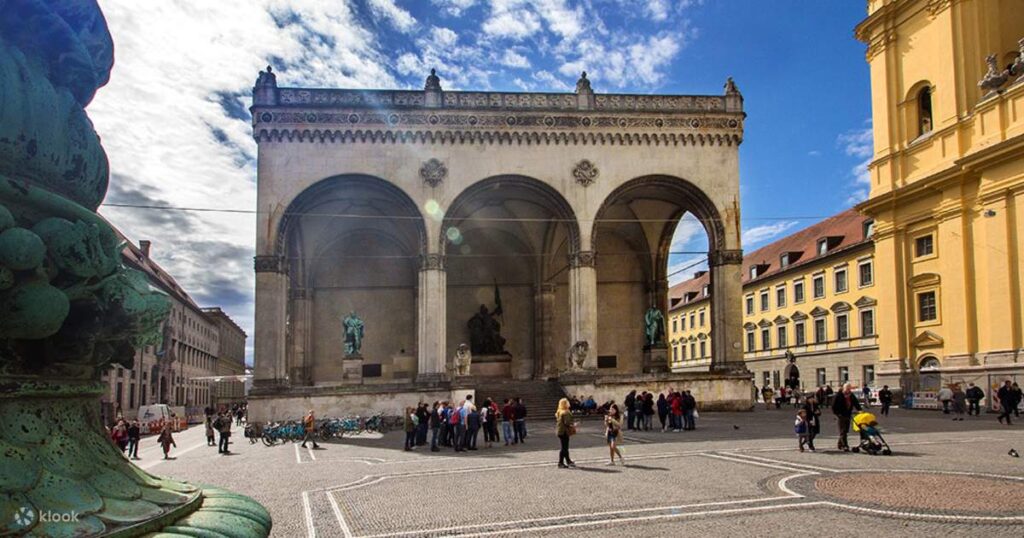
The Munich Third Reich Tour offers an insightful journey through the heart of Nazi Germany’s birthplace, highlighting Munich’s pivotal role in the rise of Adolf Hitler and the Nazi Party. This tour covers significant sites such as the former Nazi headquarters at the Brown House, the Feldherrnhalle where Hitler’s failed Beer Hall Putsch took place, and the memorials dedicated to the victims of the regime. By exploring these historic locations and learning about the events that transpired, visitors gain a profound understanding of the origins of the Third Reich and the devastating impact it had on Germany and the world.
A. Munich’s Role During the Third Reich
Munich holds a significant place in the history of the Third Reich as the city where Adolf Hitler and the Nazi Party first gained prominence. Known as the “Capital of the Movement,” Munich was the site of many key events in the early development of the Nazi regime. It was here that Hitler staged the infamous Beer Hall Putsch in 1923, an early and failed attempt to seize power, which nevertheless boosted his profile. Munich later became the administrative and ideological center for the Nazis, hosting pivotal meetings, propaganda events, and the establishment of the party’s first headquarters. The city’s historical connection to the rise of the Third Reich makes it a focal point for understanding the roots and growth of Nazi power.
B. Tour Itinerary Including Sites
- Brown House: The tour begins at the site of the former Brown House, the Nazi Party headquarters. Although the original building was destroyed, the site now houses the Documentation Center for the History of National Socialism, offering detailed exhibits on the rise of the Nazis.
- Feldherrnhalle: This historic monument is significant as the site of the Beer Hall Putsch in 1923. The failed coup resulted in the deaths of several Nazis and marked a turning point in Hitler’s rise to power.
- Odeonsplatz: A central square in Munich, Odeonsplatz was a key location for Nazi parades and rallies. It provides insight into how the Nazis used public spaces for propaganda and mass mobilization.
- Dachau Concentration Camp Memorial Site: Located just outside Munich, Dachau was the first concentration camp established by the Nazis. The memorial site offers a sobering look at the atrocities committed and the daily realities of camp life for prisoners.
- Königsplatz: Another significant site used by the Nazis for rallies and cultural events, showcasing the regime’s use of architecture and urban planning for propaganda purposes.
- Memorials and Plaques: Throughout Munich, various memorials and plaques commemorate the victims of the Nazi regime, including the White Rose resistance group and the Stolpersteine (“stumbling stones”) that mark the homes of Holocaust victims.
C. Historical Context and Impact on Munich’s History
The impact of the Third Reich on Munich’s history is profound and multifaceted. As the birthplace of the Nazi movement, the city witnessed the early formation of policies and ideologies that would lead to widespread destruction and loss of life during World War II. Munich’s role as a center of Nazi activity left indelible marks on its urban landscape and collective memory. Post-war, the city had to confront its past and the complicity of many of its citizens in the atrocities committed.
The establishment of memorials and educational centers, such as the Dachau Memorial Site and the Documentation Center, reflect Munich’s ongoing efforts to reckon with its history. These sites serve as crucial tools for education and remembrance, ensuring that the horrors of the past are not forgotten. The city’s historical journey from being the cradle of Nazi ideology to a place of reflection and learning underscores the importance of confronting and understanding history to build a more just and informed future.
Rothenburg ob der Tauber Medieval Tour
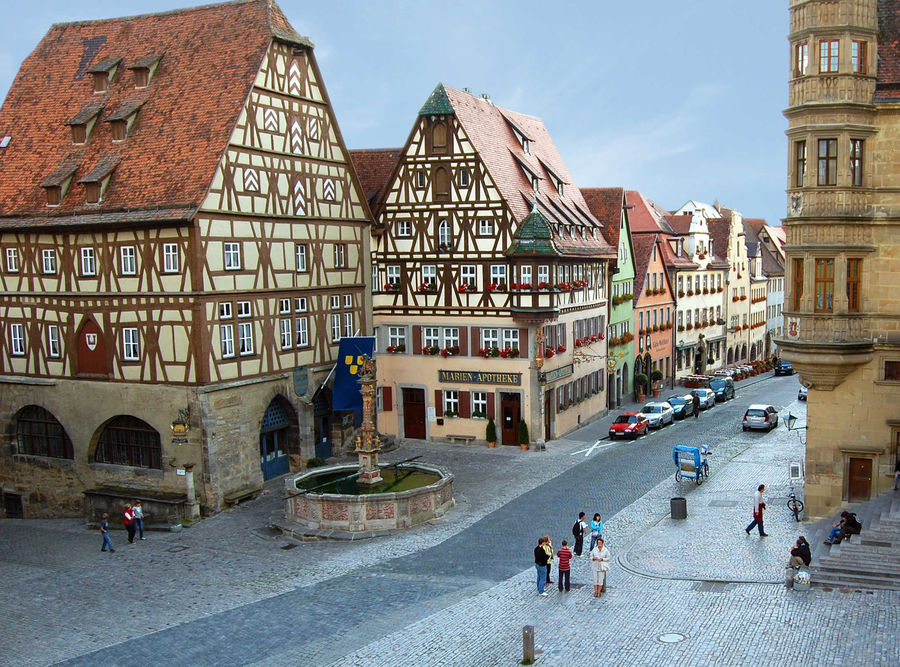
The Rothenburg ob der Tauber Medieval Tour transports visitors back in time to the enchanting world of the Middle Ages. This picturesque town, with its well-preserved medieval architecture and cobblestone streets, offers a glimpse into Germany’s rich historical heritage. The tour highlights iconic landmarks such as the medieval town walls, the Market Square with its impressive Town Hall, and the fascinating Crime and Justice Museum, showcasing the legal practices of the era. Walking through Rothenburg’s winding alleys and exploring its medieval buildings, visitors can immerse themselves in the ambiance of a bygone era, making it a captivating destination for history enthusiasts and lovers of old-world charm.
A. Overview of Rothenburg’s Medieval Heritage
Rothenburg ob der Tauber stands as a living testament to Germany’s medieval past, renowned for its remarkably preserved architecture and authentic medieval charm. Founded in the 13th century, Rothenburg flourished as a trading hub along the Romantic Road, showcasing the architectural styles of the Middle Ages. Its well-preserved town walls, towers, and half-timbered houses transport visitors to a bygone era, making it one of Germany’s most beloved medieval towns.
B. Tour Highlights Such as the Market Square and Crime and Justice Museum
The Rothenburg Medieval Tour features several key highlights that capture the essence of the town’s medieval heritage:
- Market Square (Marktplatz): The vibrant heart of Rothenburg, the Market Square is flanked by colorful buildings, including the iconic Town Hall with its stunning Renaissance facade. The square bustles with activity, offering a glimpse into medieval trade and commerce.
- St. Jacob’s Church (St. Jakobskirche): This Gothic church boasts impressive artworks, including the Altar of the Holy Blood and the Twelve Apostles Altar, showcasing the town’s religious and artistic heritage.
- Crime and Justice Museum (Kriminalmuseum): Housed in the former town hall dungeon, the museum provides a fascinating insight into medieval law enforcement, punishment, and justice. Exhibits include torture devices, criminal artifacts, and historical accounts of crime and punishment.
- Town Walls and Towers: Rothenburg’s intact town walls and towers offer panoramic views of the town and surrounding countryside. The fortified walls, with their gates and towers, highlight the town’s strategic importance in medieval times.
C. Significance of Rothenburg in Preserving Medieval History
Rothenburg ob der Tauber plays a crucial role in preserving and promoting Germany’s medieval history. Its meticulous preservation efforts, including strict building regulations and restoration projects, have ensured that the town retains its authentic medieval character. By welcoming visitors from around the world to experience its medieval ambiance, Rothenburg fosters an appreciation for the cultural heritage and architectural legacy of the Middle Ages. The town’s significance extends beyond mere preservation; it serves as a living museum, offering immersive experiences that transport visitors back in time and contribute to the ongoing legacy of medieval history in modern-day Germany.
Regensburg Old Town Walking Tour
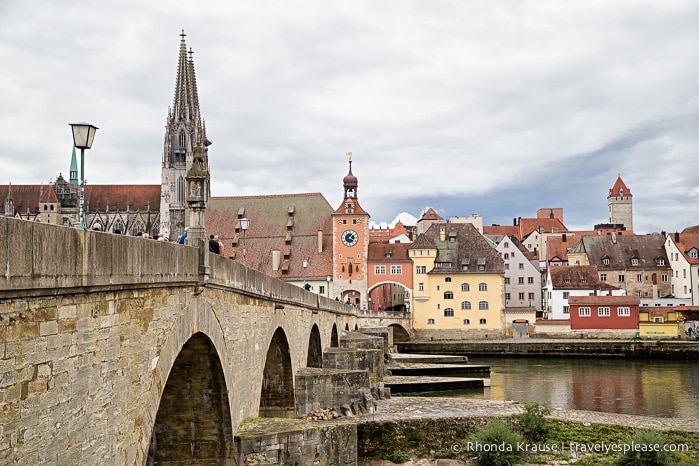
The Rothenburg ob der Tauber Medieval Tour transports visitors back in time to the enchanting world of the Middle Ages. This picturesque town, with its well-preserved medieval architecture and cobblestone streets, offers a glimpse into Germany’s rich historical heritage. The tour highlights iconic landmarks such as the medieval town walls, the Market Square with its impressive Town Hall, and the fascinating Crime and Justice Museum, showcasing the legal practices of the era. Walking through Rothenburg’s winding alleys and exploring its medieval buildings, visitors can immerse themselves in the ambiance of a bygone era, making it a captivating destination for history enthusiasts and lovers of old-world charm.
A. UNESCO World Heritage Status of Regensburg’s Old Town
Regensburg’s old town holds the prestigious UNESCO World Heritage status, recognized for its outstanding universal value as a well-preserved example of a medieval trading and commercial center. The town’s historical significance as a key hub along the Danube River and its remarkably intact medieval architecture contribute to its UNESCO recognition, making it a must-visit destination for history and culture enthusiasts.
B. Walking Tour Itinerary Covering Landmarks
The walking tour of Regensburg’s old town encompasses a range of iconic landmarks, including:
- Regensburg Cathedral (Dom St. Peter): A masterpiece of Gothic architecture, the cathedral features stunning stained glass windows, intricate sculptures, and a rich history dating back to the 13th century.
- Stone Bridge (Steinerne Brücke): Built in the 12th century, this ancient stone bridge spans the Danube River, showcasing medieval engineering and providing panoramic views of the river and cityscape.
- Historic Squares: The tour includes visits to historic squares such as Haidplatz and Neupfarrplatz, where centuries-old buildings, fountains, and monuments offer insights into Regensburg’s past.
- Thurn und Taxis Palace: This grand palace complex, once the seat of the influential Thurn und Taxis family, showcases Baroque and Rococo architecture and houses a museum detailing the history of postal services.
- Old Town Hall (Altes Rathaus): The medieval town hall, with its iconic tower and intricate facade, serves as a symbol of Regensburg’s civic pride and historical governance.
C. Historical and Architectural Insights into Regensburg
Regensburg’s old town is a treasure trove of historical and architectural wonders, offering insights into the city’s medieval and Renaissance periods. The blend of Gothic, Romanesque, and Baroque styles in its buildings reflects Regensburg’s status as a center of trade, culture, and intellectual exchange during the Middle Ages.
The walking tour provides historical context for each landmark, delving into the stories of bishops, merchants, and artisans who shaped Regensburg’s development. Visitors learn about the town’s role in the Holy Roman Empire, its connections to trade routes like the Amber Road, and its cultural contributions in fields such as music, art, and literature.
Architectural highlights such as the intricate stone carvings on buildings, the medieval fortifications, and the harmonious urban layout showcase Regensburg’s commitment to preserving its heritage. The city’s UNESCO World Heritage status underscores its importance as a living museum of European history and a testament to the enduring legacy of medieval urban planning and craftsmanship.
Bavarian Castles Tour
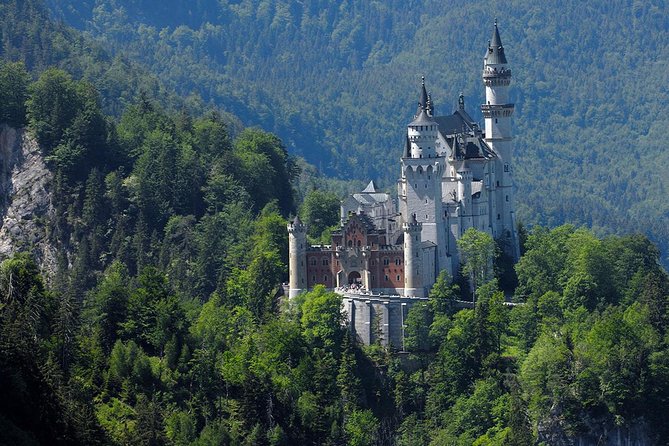
The Bavarian Castles Tour invites travelers to explore the enchanting world of royal splendor and architectural marvels in Bavaria, Germany. This tour showcases iconic castles such as Neuschwanstein Castle, Hohenschwangau Castle, Linderhof Palace, and Herrenchiemsee Palace, each offering a unique glimpse into Bavaria’s royal heritage. From fairy-tale turrets and opulent interiors to breathtaking Alpine backdrops, the Bavarian Castles Tour promises a captivating journey through history, art, and the extravagant lifestyles of Bavarian royalty.
A. Overview of Bavaria’s Royal Castles like Hohenschwangau and Linderhof
Bavaria boasts a rich legacy of royal castles that showcase the opulence and grandeur of its monarchs. Hohenschwangau Castle, nestled in the foothills of the Alps, served as a childhood residence for King Ludwig II and is renowned for its picturesque setting and romantic Neo-Gothic style. Linderhof Palace, on the other hand, reflects Ludwig II’s fascination with French Rococo architecture, with lavish interiors, stunning gardens, and the iconic Venus Grotto. Both castles epitomize Bavaria’s royal heritage and offer insights into the extravagant lifestyles of its rulers.
B. Tour Experiences and Insights into Bavarian Royalty
The Bavarian Castles Tour provides visitors with immersive experiences and fascinating insights into Bavarian royalty. Tourists can explore the richly decorated rooms, ornate furnishings, and exquisite art collections within these castles, gaining a deeper understanding of the tastes and interests of Bavaria’s monarchs. Guides share captivating stories and anecdotes about the royal family, their patronage of the arts, and the historical events that shaped these magnificent palaces.
C. Architectural and Historical Significance of the Castles
The architectural and historical significance of Hohenschwangau Castle, Linderhof Palace, and other Bavarian castles is immense. These structures not only showcase the artistic achievements of their time but also reflect the political, cultural, and social contexts of Bavaria’s history. For instance, Hohenschwangau Castle’s medieval-inspired design pays homage to Bavaria’s heritage, while Linderhof Palace’s Rococo extravagance mirrors the lavish tastes of King Ludwig II. Moreover, these castles played pivotal roles in Bavarian history, serving as royal residences, centers of artistic patronage, and symbols of Bavaria’s cultural identity. Today, they stand as enduring legacies, attracting visitors from around the world and preserving the legacy of Bavaria’s royal heritage for future generations to appreciate.
Berchtesgaden and Eagle’s Nest Tour
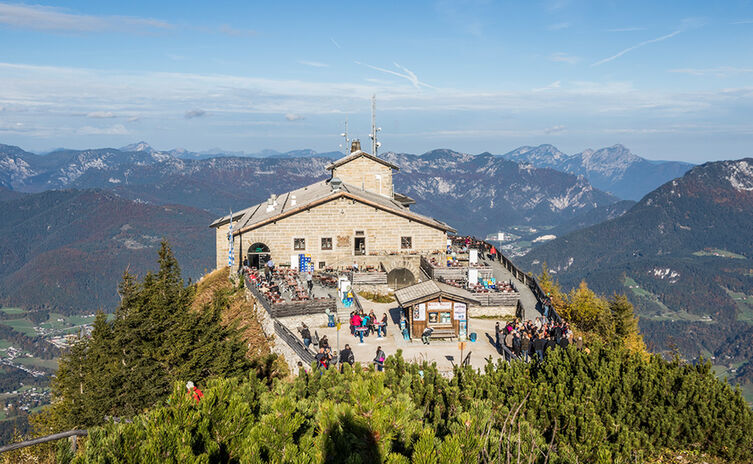
The Berchtesgaden and Eagle’s Nest Tour offers a captivating journey through the breathtaking landscapes of Bavaria, Germany. Travelers are transported to the picturesque town of Berchtesgaden, known for its alpine beauty and rich history. The highlight of the tour is the Eagle’s Nest, Hitler’s mountaintop retreat, offering panoramic views of the Bavarian Alps. This tour provides insights into the region’s natural wonders, historical significance during the Third Reich, and the unique blend of culture and scenery that defines Berchtesgaden.
A. Introduction to Berchtesgaden and the Eagle’s Nest
Nestled in the majestic Bavarian Alps, Berchtesgaden is a charming town renowned for its stunning natural beauty and historical significance. The Eagle’s Nest, perched atop the Kehlstein mountain, is an iconic destination linked to Berchtesgaden’s past as Hitler’s mountain top retreat. This juxtaposition of scenic splendor and historical intrigue makes Berchtesgaden and the Eagle’s Nest a compelling destination for travelers seeking both natural wonders and deeper historical insights.
B. Tour Details and Scenic Highlights
The Berchtesgaden and Eagle’s Nest tour offers a captivating itinerary that combines historical exploration with breathtaking scenery. Tourists can expect to visit key landmarks such as the Berchtesgaden Salt Mines, where they can learn about the region’s salt mining history and enjoy an underground boat ride. The tour also includes a scenic drive through the Bavarian Alps, passing by picturesque villages and pristine lakes like Lake Königssee. At the Eagle’s Nest, visitors can marvel at panoramic views of the Alps, explore the historical buildings, and soak in the serene mountain ambiance.
C. Historical Context of the Eagle’s Nest as Hitler’s Retreat
The Eagle’s Nest holds significant historical context as the former retreat of Adolf Hitler, built as a gift for his 50th birthday. Although Hitler rarely visited the Eagle’s Nest, it symbolized the grandeur and extravagance of the Nazi regime. The location’s strategic position atop the Kehlstein mountain also served as a propaganda tool, showcasing Hitler’s supposed connection to the mountains and projecting an image of power and dominance. Today, the Eagle’s Nest stands as a somber reminder of the dark chapter in history, offering visitors a chance to reflect on the complex legacy of World War II and the impact of the Nazi regime on the region.
Conclusion Historical Tours in Bavaria
Exploring the historical tours in Bavaria is an enriching journey through time, offering a deep understanding of the region’s diverse heritage and cultural significance. From the fairy-tale castles of Neuschwanstein and the medieval charm of Rothenburg ob der Tauber to the sobering reminders of Dachau Concentration Camp and the historical intrigue of Berchtesgaden and the Eagle’s Nest, Bavaria’s historical tours offer a multifaceted exploration of the past. These tours not only educate about specific historical periods but also foster a connection to the people, events, and places that have shaped Bavaria’s identity. Through preservation efforts, immersive experiences, and insightful narratives, historical tours in Bavaria serve as invaluable tools for preserving history, promoting cultural understanding, and encouraging meaningful reflection on the lessons of the past for generations to come.
Here you can learn about Historical Tours in Berlin
